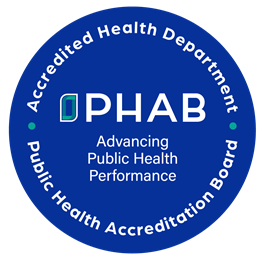Onsite wastewater treatment systems in Cattaraugus County are regulated by the Environmental Health Division in accordance with NYS standards and specifications (10NYCRR Appendix 75-A: Wastewater Treatment Standards - Residential Onsite Systems) in effect at the time of their construction. Existing wastewater treatment systems that do not meet current standards are allowed to be operated until they fail and are in need of full or partial replacement.
Installation of a New or Replacement Wastewater Treatment Systems
All onsite wastewater treatment system repairs or installations in Cattaraugus County require a permit issued by the Environmental Health Division prior to construction. Commercial systems and other large wastewater treatment systems (with a design flow of 1000 gallons per day or greater) also require a State Pollution Discharge Elimination System (SPDES) Permit issued by the NYS Department of Environmental Conservation and require the services of a licensed Professional Engineer.
To obtain a permit:
1. You, or a selected contractor acting as your representative must complete the "Application for an Onsite Wastewater Treatment System Construction Permit" and submit it with payment to the Environmental Health Division.
2. An inspector will perform a site investigation with you and your contractor. This involves evaluating the site for potential environmental and health hazards, as well as evaluating the soil stratum and soil percolation rates. For replacement systems, or sites with severe space restrictions, an engineering evaluation or design may be necessary.
3. The inspector will design your new treatment system in accordance with the current NYS standards using the information obtained during the site inspection, then issue a "Permit to Construct an Onsite Wastewater Treatment System."
4. Once the system is constructed, the inspector will visit the site again to inspect the work before it is covered. If the construction is satisfactory, a "Permit to Operate an Onsite Wastewater Treatment System" will be issued.
Operation & Maintenance of Your Wastewater Treatment System
Over time all wastewater treatment systems eventually fail, requiring replacement of part or all of the system. This is often due to a lack of maintenance or the plugging of the soil around your leach system/sand filter. Fortunately, this process generally takes decades and steps can be taken to prevent premature failure enabling you to maximize the lifespan of your system.
- Have your tank pumped regularly. When used at full capacity, you should have your tank pumped every two to three years. Without regular pumping, solids will accumulate in your tank causing your system to backup, or worse allow solids to enter your leaching system/sand filter, thereby plugging the soil. If your septic tank is equipped with an outlet filter, make sure it gets cleaned whenever you have your tank pumped. Seasonal and under-utilized systems can have tanks pumped on a longer schedule.
- Avoid introducing toxic or caustic chemicals into your treatment system. Many common cleaners, beauty products, and expired medications can be harmful to the bacteria living in your septic tank. They will reduce the effectiveness of the wastewater treatment and in a short time, can damage the treatment system components. BEWARE of products advertised as miracle cures for a failed system. Do not waste money or flush such products down your toilet.
- Do NOT drive over your treatment system. Unless specifically designed to be driven over, system components may be damaged by the extra weight of a vehicle (broken sewer lines are common). Vehicle traffic around your leaching system/sand filter is particularly harmful. Even without physical damage to the components, soil compaction will prevent septic tank effluent from leaching into the ground.
- Mow the area over and around your treatment system regularly. The roots of larger plants like bushes and trees will grow into the pipes of your treatment system causing pipe breaks and blockages. Regular mowing will prevent these types of plants from becoming established and creating problems.
- Periodically inspect your system components and pipes. Newer systems will have inspection ports. These are vertical pipes installed so that you can view the flow of effluent through your treatment system. They will stick up above the ground and should have a cap on them. When the system is functioning properly, there should be no standing water in these pipes. Remember to recap them after use to prevent foreign objects from entering your system. Do not cut these pipes off at ground level. They are both useful and important, even if they are difficult to mow around.
Septic System Operation & Maintenance (brochure)
Sand Filter Maintenance Tips (brochure)


